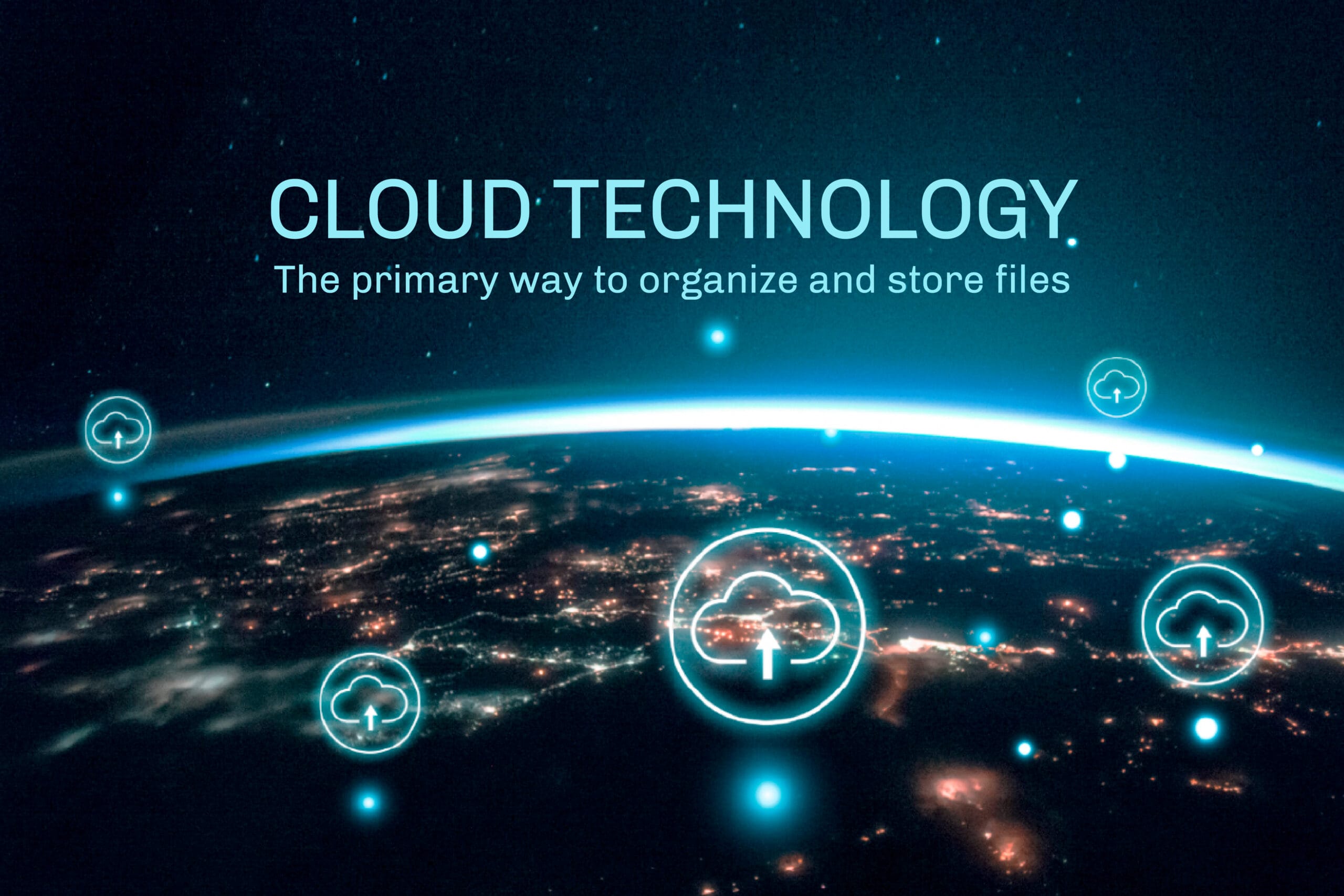
What Is Cloud-based Software?
Fundamentally, cloud-based software is software meant to run on remote servers housed on the Internet instead of local computers or servers. Unlike conventional applications, which have to be installed on a user’s computer or a local server, cloud-based programmes are offered online and accessed via a web browser. Under the more general heading of cloud computing—which covers additional services such as storage, networking, and analytics—this style of software delivery fits.
Said another way, when you use cloud-based systems, you are effectively outsourcing the heavy lifting of data processing and storage to capable, third-party servers (the cloud). This makes it simpler for companies to distribute and control software across several sites and devices since it lets users access and run sophisticated programmes without concern for the underlying infrastructure.
Imagine having to install massive tools like a CRM system or a project management tool on every computer in a company. This would be time-consuming and expensive and require consistent maintenance and updates. By means of a single version of the software accessible to all authorised users via the Internet, cloud-based software removes this difficulty and guarantees everyone is utilising the most current version of the programmeme.
Moreover, the ability of cloud-based computing goes beyond simple software distribution. It also includes a wide range of services. For example, artificial intelligence, machine learning, and data analytics—all of which are increasingly vital in the data-driven environment of today. This makes cloud-based systems pillar of invention and digital transformation.
How Does Cloud-Based Software Work?

Gaining an understanding of the principles of cloud-based software would help one to appreciate how it provides such great capabilities together with unmatched simplicity. Fundamentally, cloud-based systems rely on a virtualised environment separating the actual hardware from the used software. The following is a comprehensive analysis of the operation of cloud-based programmes:
Data Storage in the Cloud
In conventional computing systems, data is kept locally on a user’s PC or on a physically present on-site server. This method restricts the data’s scalability and accessibility. With cloud-based software, however, data is kept far away on cloud servers scattered over several geographical areas. This distribution makes more strong and safe storage choices possible. If one server goes down, others can quickly compensate, ensuring uninterrupted access to your data.
With almost infinite scalability, cloud storage lets you keep enormous volumes of data without using actual storage media like servers or hard discs. Furthermore, companies free from hardware restrictions can readily increase their storage capacity by signing up for bigger plans.
Data Processing on Remote Servers
Running sophisticated programmes can require enormous processing capability. Users used to run data-heavy programmes depending on local servers or strong personal PCs. With cloud-based computing, all processing chores are handled on distant computers tuned for high-performance computation. These servers can manage thousands of concurrent activities, so the end-user does not require a high-powered computer to use resource-intensive apps.
Accessing a cloud-based programme effectively sends commands to the cloud server, which handles the enquiries and returns the answers to the user in real-time. Thus, faster performance and fewer hardware-related crashes are possible.
Universal Access Across Devices
Cloud-based software appeals most especially for its capacity to be accessible from a wide range of devices, including desktop computers, laptops, tablets, and cellphones. Users of the cloud-based programme can log into their accounts from any Internet-connected device, therefore allowing them the flexibility to work from anywhere or on the road.
For companies that need team members distributed over several geographical locations to collaborate, this degree of accessibility makes cloud-based programmes perfect. The flexibility of cloud-based technologies helps remote work—a trend that has witnessed a notable increase recently—by means of ease. Employees working from home, the office, a coffee shop—anywhere—can easily use the same tools and resources.
Seamless Maintenance and Updates
The requirement for manual updates—often forcing users to download patches or install fresh versions of the programme—is one of the main irritations with conventional software. Cloud-based computing solves this issue. Maintaining and updating their apps is entirely on the software providers. Users thus constantly have access to the most recent features and security upgrades without doing anything. Along with saving time, this lowers the risk of vulnerabilities brought on by obsolete programmes.
This translates to reduced downtime and fewer IT resources allocated to software maintenance. Moreover, users benefit from automated scalability, as cloud-based systems adjust resource allocation based on demand.
Types of Cloud-Based Software

The broad term cloud-based computing refers to several services meant to satisfy different purposes. Three basic categories define cloud-based software depending on the kind of service rendered: Infrastructure as a Service (IaaS), Platform as a Service (PaaS), and Software as a Service (SaaS). Every one of these presents special features and fulfils diverse uses.
Software as a Service (SaaS)
The most often used kind of cloud-based software is SaaS, which stands for fully hosted and managed by a third-party provider kind of software. Usually using a web browser, SaaS apps are distributed via the Internet. SaaS includes Salesforce, Dropbox, and Google Workspace, formerly G Suite.
Companies that require ready-to-use apps without concern about the underlying infrastructure can find ideal SaaS solutions. Without installing anything on their devices, users may just register for a service, log in, and begin using the programme. Jobs like document management, email marketing, and customer relationship management (CRM) require SaaS solutions.
Platform as a Service (PaaS)
PaaS is meant to give developers the tools and platform they need to create, test, and install programmes free from controlling the underlying hardware and operating systems. From databases to operating systems to development frameworks to testing tools, PaaS services provide a whole cloud-based development environment.
While the cloud provider handles tasks like creating servers, managing storage, and making backups, popular PaaS providers like Google Cloud Platform (GCP) and Microsoft Azure let developers concentrate on coding. Developers looking for a scalable platform to create apps free from infrastructure management’s bogging-down effect will find PaaS perfect.
Infrastructure as a Service (IaaS)
The most basic kind of cloud computing, Infrastructure as a Service (IaaS) provides virtualised computer resources like storage, networking, and virtual machines over the Internet. IaaS lets companies create their own IT infrastructure without needing to buy actual hardware. This gives more freedom since companies may rapidly adjust their infrastructure depending on their present need.
Leading IaaS companies such as Microsoft Azure and Amazon Web Services (AWS) provide virtual machines, load balancers, and data storage options, among other offerings. Businesses who need total control over their IT infrastructure but do not want the cost of keeping on-site hardware maintained will find it especially helpful IaaS.
Hybrid Cloud vs. Public Cloud vs. Private Cloud

Organisations looking at implementing cloud-based systems have to decide which cloud deployment strategy best matches their requirements. Public, private, and hybrid clouds are the three main models of cloud-based computing. Every one of these approaches presents varying degrees of security, scalability, and control.
Public Cloud
The most often used and easily available kind of cloud-based software is the public cloud. Under this approach, a third-party vendor hosts and oversees cloud infrastructure, therefore enabling several users over the Internet. This lets companies pay just for what they use and rapidly expand resources as needed. Because of their adaptability and economy, public cloud solutions such as Microsoft Azure and Amazon Web Services (AWS) are becoming rather popular. Nonetheless, since several users share the infrastructure, some companies could be worried about data security and privacy.
Private Cloud
By comparison, the private cloud provides more protection and control and is reserved just for one company. Businesses handling sensitive data—like those in finance or healthcare—often want private cloud solutions. Though it can be housed on-site or by a third-party vendor, the private cloud guarantees that data and resources are not shared with other users. Although private clouds provide more protection, they typically cost more and are less adaptable than public clouds, so infrastructure investment is more necessary.
Hybrid Cloud
Combining the greatest elements of public and private clouds, a hybrid cloud is employed for less-sensitive tasks requiring flexibility and scalability, and businesses can use a private cloud for sensitive or important apps. Greater customising and cost-effectiveness made possible by this approach enable businesses to maximise their cloud plans depending on their needs. For companies with changing needs, hybrid clouds notably help since they allow one to scale up or down as needed while still under control of important data.
Industries Leveraging Cloud-Based Software

Across several sectors, cloud computing has shown to be a transforming agent enabling companies to improve output, simplify processes, and save costs. Cloud-based software’s scalability and adaptability let it fit many industries, each of which gains something different.
Cloud-based software is of particular importance to small and medium-sized businesses, as it allows them to access a full range of functionality from advanced applications, such as asset tracking software, without having to make a substantial upfront payment. Some important sectors where cloud-based systems have transformed established practices are below:
1. Healthcare
The adoption of cloud-based programmes has fundamentally changed the healthcare sector digitally. Cloud computing has enhanced patient care and professional cooperation among healthcare experts by allowing securely storing and accessing patient data remotely. Now easier to handle, electronic health records (EHRs) guarantee that vital information is always available independent of the patient’s location. Driven by cloud-based software, telemedicine has evolved into a necessary component of healthcare delivery since it lets doctors monitor conditions in real-time and see patients virtually.
2. Finance
Long ago, financial organisations concentrated mostly on security and efficiency. Cloud-based systems guarantee that consumer information and transaction records are secured and kept in conformity with industry standards, so offering a great way for safely managing financial data. Additionally, allowing financial firms to use fraud detection systems, examine consumer behaviour, and provide tailored services in real time with cloud-based tools. Businesses may rapidly increase their resources as financial markets change, therefore meeting fresh challenges without making investments in physical infrastructure.
3. Manufacturing
Cloud-based asset management has transformed industrial sector tracking of equipment, inventory control, and production line optimisation. Using cloud-based predictive analytics helps manufacturers estimate maintenance needs, track assets across several sites, and lower downtime. This leads to simplified processes and a notable drop in equipment failure and supply chain disruptions.
4. Retail
Cloud-based programmes are absolutely essential in retail for controlling massive inventory, consumer data, and sales data spread over several sites. Using cloud solutions, retailers combine their point-of-sale (POS) systems with back-end operations to give real-time stock level and consumer preference views. Cloud-driven analytics also enable companies to customise customer interactions and marketing plans depending on real-time data, therefore enhancing customer involvement and sales.
The Advantages of Cloud-based Software

The many advantages cloud-based systems present—especially in terms of cost savings, scalability, and operational efficiency—help to explain their general acceptance. Let’s investigate some of the main benefits in more thorough depth:
Global Accessibility and Flexibility
Cloud-based programmes have among their most transforming qualities their accessibility from anywhere in the world. Users of a consistent Internet connection can log into their cloud accounts from any device—desktop computer, laptop, tablet, or smartphone. For companies with staff scattered around several sites that need to operate in several time zones, this adaptability is priceless.
Especially important in enabling remote work and teamwork is cloud-based computing. Being able to manage assets in the cloud and operate smoothly across devices and places guarantees that companies remain competitive and profitable in a workforce growing more globalised and mobileized. Teams regardless of physical location may share data in real time, work on documents, and efficiently communicate.
Cost Savings and Efficiency
The cost-effectiveness of cloud-based software is another main benefit. Purchasing licenses, installing the programme on every workstation, and maintaining physical servers all call for a large upfront outlay of funds in traditional systems. Cloud-based systems on the other hand run on a subscription model, hence companies only pay for the services they really utilise. Startups, small organisations, and even major companies looking to minimise expenses find cloud software far more easily accessible because of this flexible pricing structure.
Apart from the lower initial fees, cloud-based programmes let companies cut their IT budgets. The cloud provider manages all infrastructure and maintenance chores, so companies save money by not investing in expensive hardware or hiring more IT people. Moreover, the capacity to scale resources up or down as needed guarantees that businesses aren’t paying for wasted resources, so cloud-based computing is quite an effective solution.
Scalability and Flexibility
One of cloud-based systems’ best characteristics is their natural scalability. As a company grows, its technological requirements develop; the cloud lets companies easily expand their infrastructure and applications without having to buy more hardware. The cloud provider can add resources instantaneously regardless of a company’s need—more storage space, more processing capability, or more user licenses.
On the other hand, companies going through slower times or cutting their staff can readily downscale their offerings to guarantee they only pay for what they really use. For companies of all kinds, especially those seeing fast expansion or seasonal swings, cloud-based software appeals because of this adaptability.
Automatic Maintenance and Upgrades
Maintaining programmes that are current with traditional software requires both time and effort. IT teams should routinely install fresh versions of the software on every computer, together with security patches and updates. Cloud-based programmes free companies of this load through automated handling of all upgrades and maintenance. Without having to do so, users always have access to the most recent edition of the programme, complete with fresh features, bug repairs, and security upgrades.
Apart from minimising downtime, this guarantees that companies are shielded from security flaws and gain from ongoing software development. Updates are handled server-side, thus they do not interfere with the user’s workflow and let staff members concentrate on their work free from disturbance.
Enhanced Security and Data Protection
Cloud-based asset management provides improved security to safely retain business assets from illegal access or intrusions. To guarantee the maximum degrees of data security, this covers encryption, multi-factor authentication, firewalls, and frequent security audits.
Moreover, cloud-based systems provide automatic data backups, therefore lowering the possibility of data loss brought on by hardware failures or cyberattacks. Business continuity is ensured by companies fast recovering their data from the cloud in the case of a disaster.
Compliance and Regulatory Aspects

Ensuring that companies embracing cloud-based computing follow legal guidelines concerning data privacy, security, and governance is one of the main issues that worries them. Various businesses including government, banking, and healthcare have to follow particular rules controlling data access, storage, and processing. Understanding the need of compliance, cloud providers have included tools to enable companies satisfy these high criteria.
Healthcare Compliance (HIPAA)
Protecting patient information in healthcare, for example, depends on following the Health Insurance Portability and Accountability Act (HIPAA). Healthcare companies’ cloud-based systems depend on cloud providers who must make sure they follow HIPAA rules. This covers patient data encryption, thorough audit trail provision, and guaranteeing that only authorised staff members may access private information.
Financial Compliance (GDPR, PCI-DSS)
To safeguarding consumer financial data, banking organisations also have to follow the General Data Protection Regulation (GDPR) and Payment Card Industry Data Security Standard (PCI-DSS). Offering financial institutions cloud-based asset management solutions, cloud service providers guarantee that data is encrypted, access restrictions are in place, and all security measures satisfy legal criteria. These rules guarantee against unauthorised access and breaches of financial transactions, consumer data, and assets.
Government and Public Sector Compliance
Government organisations have to follow rigorous standards for openness and data stewardship. Public sector cloud-based software solutions have to satisfy certain standards including data localisation, encryption, and safe access limits by cloud providers. Many governments additionally mandate that cloud services guarantee sovereignty and security by keeping openness on where data is kept and handled.
Businesses that guarantee adherence to these few rules can boldly implement cloud-based systems without concern about possible legal and financial consequences.
Integration with Other Enterprise Systems

One of the major advantages of cloud-based programmes is their ability to integrate seamlessly with other enterprise systems, such as ERP (Enterprise Resource Planning), CRM (Customer Relationship Management), and HR platforms. By combining cloud solutions with these essential tools, businesses can streamline operations, improve collaboration, and enhance decision-making.
ERP Integration
For example, integrating cloud-based software with an ERP system allows businesses to centralise their operations, improving visibility across departments such as finance, procurement, and supply chain management. This enables real-time tracking of assets and inventory, improving efficiency and decision-making. With cloud-based ERP integration, companies can ensure that their resources are used optimally, enhancing productivity and profitability.
CRM Integration
Similarly, integrating cloud-based asset management with CRM systems helps businesses keep track of customer interactions and asset usage, providing a holistic view of both internal and external operations. This integration helps sales teams manage customer relationships more effectively, offering personalised services based on customer data. By syncing customer data with asset data, companies can ensure that their resources align with customer needs, improving service delivery.
HR Integration
Cloud-based solutions can also integrate with HR platforms, improving employee management and productivity. From payroll to performance tracking, integrating cloud-based programmes with HR systems helps businesses manage their workforce more effectively. This can be particularly useful for remote teams, ensuring that all HR processes are streamlined and accessible via the cloud.
Sustainability and Cloud-Based Systems
Business decisions now heavily rely on sustainability, and cloud-based computing is helping to drive greener practices by means of its relevance. With their large hardware needs, traditional data centres consume enormous quantities of electricity, which greatly adds to carbon emissions. Moving to cloud-based systems helps businesses greatly lower their environmental impact and gain from the natural efficiency of the cloud.
Energy Efficiency
Cloud providers have made notable progress towards lower energy consumption. To cut energy waste, many cloud data centres employ energy-efficient technologies including sophisticated cooling systems and best server use. Moreover, cloud providers usually run at a scale that enables them to reach efficiencies not attainable for single businesses running their own data centres.
Renewable Energy Adoption
Many of the big cloud providers, including Google Cloud and Microsoft Azure, are dedicated to running their data centres run on renewable energy. Cloud providers are not only lowering their carbon footprints but also enabling their clients to follow more sustainable practices by sourcing power from hydroelectric, solar, and wind sources. Companies turning to cloud-based software are essentially helping to drive the green energy revolution.
Reduction in Physical Hardware
Businesses greatly cut the requirement for physical infrastructure, including servers and networking gear, when they migrate their operations to the cloud. This not only lessens the energy needed to run and cool the hardware but also lessens the environmental effect of manufacture and disposal of these gadgets. Furthermore, cloud-based asset management lessens the actual presence of on-site equipment, therefore enabling businesses to save space and energy.
itemit’s Cloud-based Software
Cloud-based software represents the direction of computing, not only a fad. Cloud-based systems offer the flexibility, scalability, and cost-efficiencies required to remain competitive as companies change in an environment going more and more digital. Cloud-based programmes help companies to simplify their operations and concentrate on innovation by means of worldwide accessibility, smooth cooperation, and automatic updates.
Adopting cloud-based computing can transform the way you do business, regardless of your size—small startup looking for reasonably priced solutions or huge company trying to grow your digital infrastructure.
itemit’s range of software is all cloud-based, meaning you can take advantage of all its capabilities. Developing, operating, and maintaining a varied inventory of assets is no mean feat but with our software, you can do so in a cost-effective manner, enabling you and your team to focus on blue-sky thinking.
If you would like to learn more about itemit’s software, contact our friendly and helpful team today. You can reach them at team@itemit.com or sign up for our 14-day Free Trial to find out just how well itemit’s software can work for you.


Try itemit
Choose a better way to track
your assets.
Start your free 14-day trial now!

Keep Learning
itemit Blog
Tips, guides, industry best practices, and news.
What are PUWER regulations and How They Impact Asset Tracking?
Discover PUWER regulations, their importance for workplace safety, and how they affect asset tracking systems. Ensure compliance and manage assets effectively!
Mastering Asset and Configuration Management: A Guide for Effective Asset Tracking
Learn how asset and configuration management enhance tracking efficiency, streamline processes, and improve asset visibility in your organization.
Predictive Asset Maintenance: How to Stay Ahead of Equipment Failures
Learn how predictive asset maintenance improves integrity with AI, analytics, and monitoring. Explore tools, trends, and cybersecurity.



